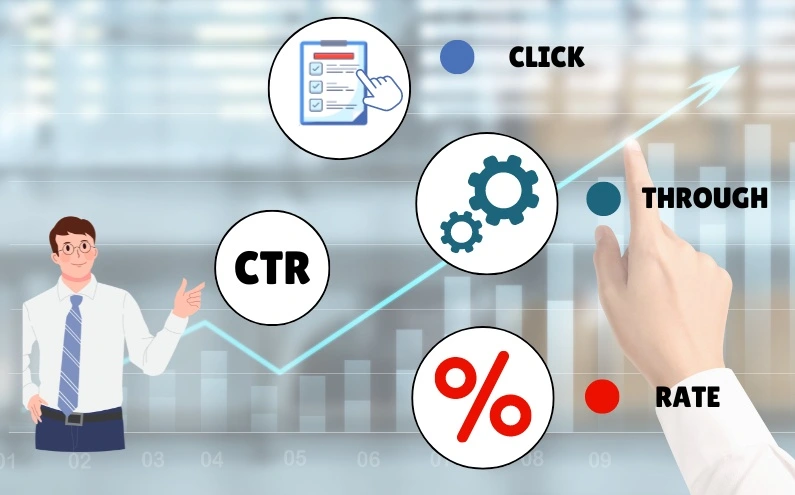In the realm of digital marketing, success hinges not only on reaching the right audience but also on engaging them effectively. Click-Through Rate (CTR) plays a pivotal role in measuring this engagement. Whether you’re running search ads, display campaigns, or email marketing, understanding CTR is crucial for optimizing your strategies and achieving better results.
What Is CTR?
Click-Through Rate (CTR) is a metric used to measure the ratio of users who click on a specific link to the number of total users who view a page, email, or advertisement. It is calculated by dividing the number of clicks by the number of impressions (views), expressed as a percentage.
Formula For CTR
𝐶𝑇𝑅= (𝐶𝑙𝑖𝑐𝑘𝑠/𝐼𝑚𝑝𝑟𝑒𝑠𝑠𝑖𝑜𝑛𝑠)×100
For instance, if an ad receives 500 clicks from 10,000 impressions, the CTR would be 5%.
Why Is CTR Important?
CTR serves as a key performance indicator (KPI) in digital marketing for several reasons:
Performance Measurement
CTR serves as a key performance indicator (KPI) to gauge the success of advertising campaigns. A higher CTR typically indicates that the ad is resonating well with the audience.
Ad Relevance and Quality
A high CTR suggests that the ad content is relevant to the target audience’s needs or interests. Platforms like Google Ads use CTR as a factor in determining Quality Score, which influences ad rank and cost-per-click (CPC).
Campaign Optimization
Monitoring CTR helps marketers optimize campaigns by identifying which ads or strategies are performing well and which ones need improvement.
Factors Influencing CTR
Several factors influence CTR, and understanding these can help in devising strategies to improve it:
Ad Copy and Design
Well-crafted ad copy with compelling headlines, clear calls-to-action (CTAs), and visually appealing design can significantly boost CTR.
Relevance
Ads that are relevant to user intent and context tend to have higher CTRs. Targeting the right audience with the right message is crucial.
Positioning
Ads placed in prominent positions on search engine results pages (SERPs) or websites often attract more clicks.
Timing
In email marketing, sending emails at optimal times when recipients are more likely to engage can increase CTR.
Mobile Optimization
Given the rise of mobile usage, ensuring ads are optimized for mobile devices is essential for maximizing CTR.
Strategies To Improve CTR
Now, let’s explore some actionable strategies to enhance CTR across different digital marketing channels:
Craft Compelling Ad Copy
Use clear, concise language, highlight unique selling propositions (USPs), and incorporate relevant keywords.
A/B Testing
Test different ad variations to identify the most effective elements, such as CTAs, headlines, and visuals.
Enhance Ad Relevance
Utilize targeted keywords, audience segmentation, and ensure alignment between ad content and landing page experience.
Optimize for Mobile
Ensure ads are responsive and load quickly on mobile devices, with mobile-specific CTAs and formats.
Utilize Ad Extensions
Include ad extensions (e.g., sitelinks, callouts) to provide additional information and encourage clicks.
Improve Email Campaigns
Personalize subject lines, segment email lists, and optimize email content for higher CTR.
The conclusion summarizes the importance of CTR in digital marketing and emphasizes the ongoing process of testing, analyzing, and refining strategies to optimize CTR. It highlights the role of CTR in driving engagement, improving ad performance, and ultimately enhancing overall marketing success.

